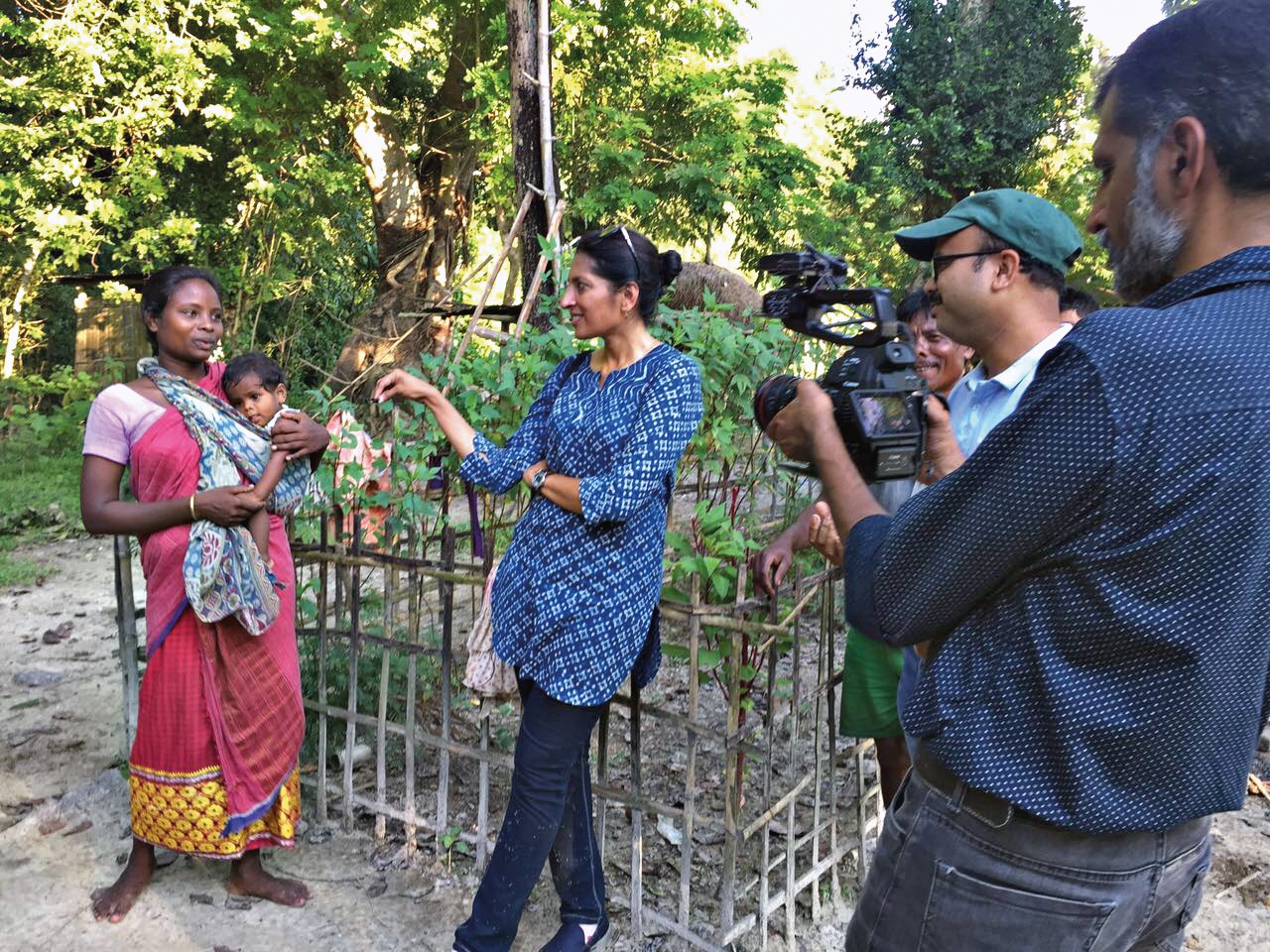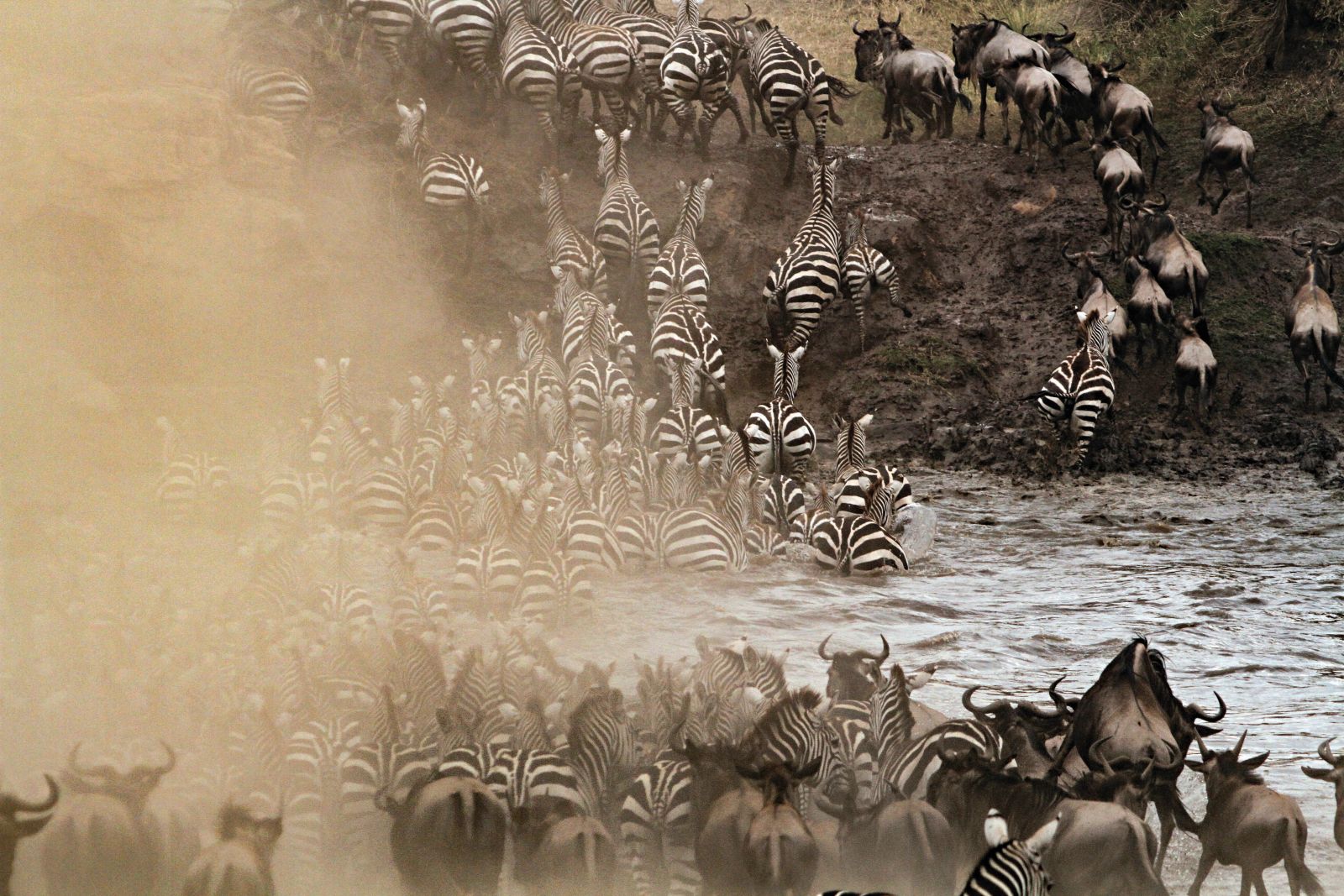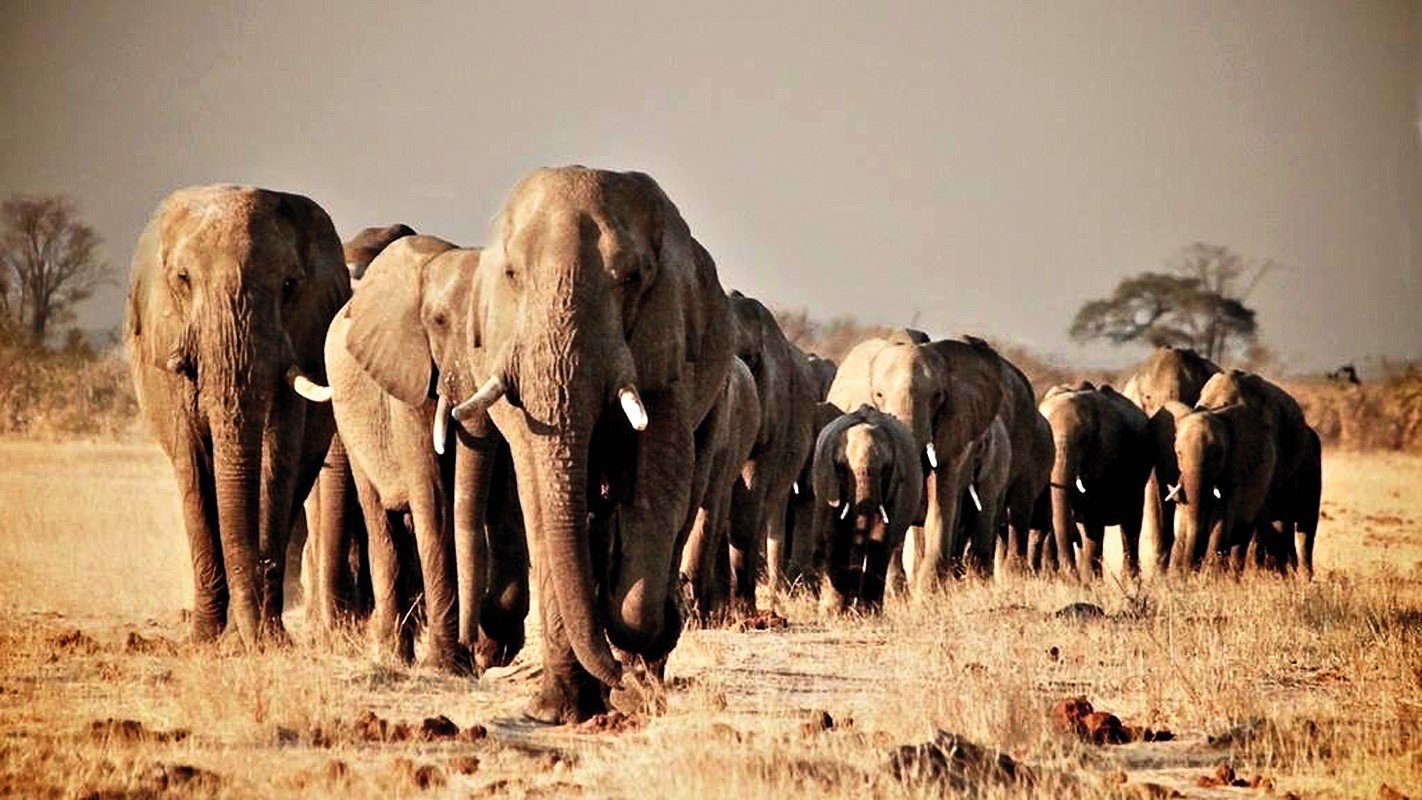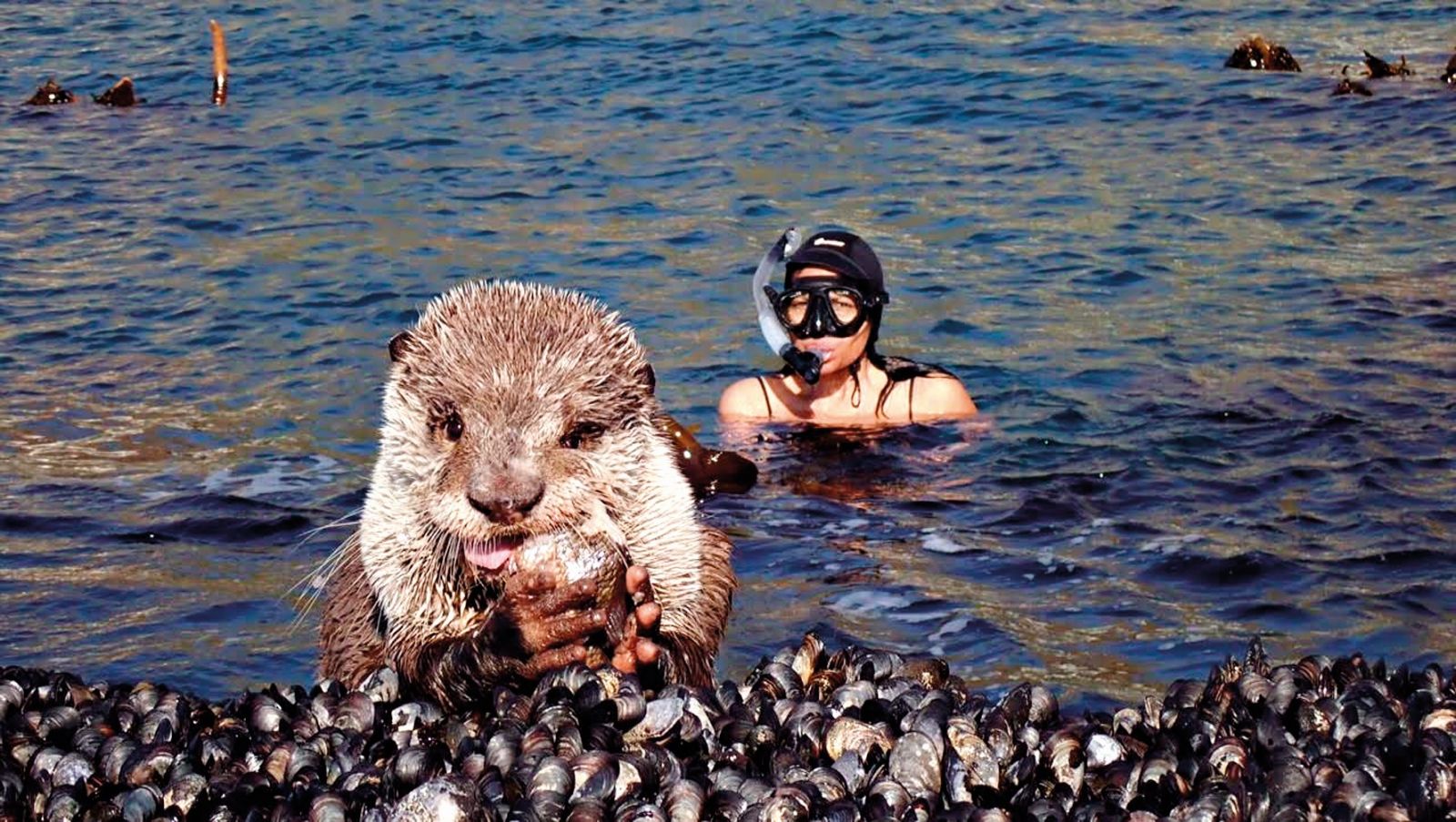Meet Swati Thiyagarajan
First published in Sanctuary Asia,
Vol. 40
No. 6,
June 2020
Swati Thiyagarajan is one of India’s top conservation and environmental journalists. She was the environment editor at NDTV; her show ‘Born Wild’ ran successfully for over 15 years on the channel. Her book, Born Wild, chronicles her experiences in the wilds of India and Africa. Her documentary film titled ‘The Animal Communicator’ had a theatrical release in Cape Town, where she currently works at the Sea Change Project for the conservation of the Great African Sea forest. Bittu Sahgal delves into what makes this two-time winner of the Ramnath Goenka Award for excellence in environmental journalism, and the Carl Zeiss Award for her reporting on wildlife conservation, hopeful about the future of the planet.
Tell us a bit about your childhood and your family?
I grew up in Chennai and I was very lucky to have a dad who was passionate about animals and nature. A student of Rishi Valley School, he was influenced by J. Krishnamurti. I also spent considerable time with my dad’s best friend, Siddharth Butch, an ornithologist and photographer; on weekends, he would take me out into the forests of the Theosophical Society on the banks of the Adyar river, where he taught me to love and appreciate the living world around me. I was made aware at quite a young age that humans were not the center of existence and that we were just another piece in this wonderful jigsaw that makes our planet. I can look back and see now that I had a wonderful mix of nature, philosophy and natural history as part of my education. What I learnt on those weekends were more important than all of the formal education I received. I found my happy place at an early age and never quite left.

‘Born Wild’ was shot across India, covering stories of wildlife, people and the environment. Here, Swati interviews a woman whose home was trampled by an elephant herd in a tea estate in Tezpur, Assam.
You are a wild child! Do you ‘talk’ to wild animals?
I am a wild child! A tree hugger, a barefooted human animal in my happy place. As a child, I was told that we could talk to animals and I had no filters, as children don’t, and believed that I could. I went through a phase where I had a real affinity for finding birds in distress. I could literally feel them calling to me. I could approach them and they would tamely let me pick them up and take them to Siddharth uncle, who could heal any hurt animal as long as it wasn’t mortally wounded. Somewhere in my late teens, however, I lost that ability to sense hurt birds... as my teenage angst brewed, that energy shift inside changed things, I guess. However, my love for being in the wild never diminished. Sea turtle walks, jackal tracking, finding the slender loris at night, recording frog choruses in the rain, birding ... all of this continued. Then I lost Siddharth uncle to cancer when I turned 16, by which time I was in Rishi Valley; being in that campus helped me heal.
Of course, over the years, I lost that childlike ability to be entirely open and grew a little skeptical about direct communication with animals. It was not that I stopped believing but as a reporter, witnessing the many challenges and destruction in the world, and understanding that my lifestyle had contributed to that destruction, the marginalisation of our tribal communities, and the exploitation… I think I lost a bit of the hopeful joy.
And then, almost like the universe needed me to believe again, I met two incredible people 10 years ago – Jon Young, a master tracker and founder of the ‘8 Shields’ initiative, and a profound wilderness mentor and philosopher; and Anna Breytenbach, a trained interspecies communicator and intuitive tracker. I made a film called ‘The Animal Communicator’ about these two people, and found my spark. So yes, I talk to animals... they too talk back to me... I can’t always hear them, but I know if I took the time and I focused, I could. But be that as it may, it’s more the understanding that we live in a world that is deeply sentient, it’s an ancient biological system that sustains life. So, to just have more compassion and understanding and respect for her and her generosity towards us is key.

Thousands of zebras and wildebeest cross the dusty river crossing during the spectacular annual Great Migration in August in the Masai Mara National Reserve, Kenya.
How did ‘Born Wild’ come about?
I was very lucky that my bosses at NDTV, Prannoy and Radhika, were committed to the environment and believed that it needed more coverage. I edited a half-hour video on olive Ridley turtles on a weekend and showed it to them. They loved it! The confidence that grew then helped me launch ‘Born Wild’. No other news channel then or now has dedicated so much air time to the environment and conservation issues. Even though we were predominantly a news channel, with limited budgets, they let me have a camera person, an editor and a coanchor who would do the show in Hindi. We were, I think at the time, in 2000, the first all-women wildlife crew in the
field. And I got to do it for 15 years.
Should women take charge of our planet since men are doing such a hatchet job on it?
Of course, they should! It is a fact that when social uplifting is approached by empowering women, dollar for dollar, or rupee for rupee, goes back into families and everybody’s life improves. During this COVID-19 crisis, some of the countries performing the best – Germany, Iceland and New Zealand... are all countries with women in charge. And in any case, men have had their run, and it’s not working. Our most powerful motivators today are young girls like Greta Thunberg, asking us to wake up. So why not leave it to the women now?

A herd of African elephants make their way across marshlands of the Savuti Reserve in Botswana, Africa.
Human rights activists justifiably demand equity for Homo sapiens. Where does that leave every other species on Earth?
Nowhere. Not because they are wrong, but because the demand is lopsided. It’s like following conservation plans that exclude people. They too are flawed and fail. Nature and people are the same. We are nature. I rather go with nature first because nature includes us in my interpretation of how I see it.
To say the least, we have learnt from COVID-19 that we are only as strong as our most vulnerable. So, if we keep marginalising our most vulnerable, or we keep decimating our environment with the dubious aim of ‘development’, we are going to lose. Some of our richest biodiversity and our most intact habitats are in places where indigenous people are in charge. When conservation plans move towards conservancies, making local communities the custodians of the wild around them, we see success. We need to work towards education and health, because that helps slow down the population trend, and that is a huge step. Education also enables people to question their status quo and hopefully then also question the lopsided access to resources and opportunities. Let’s face it, livelihood issues can be destructive too. Dependence on firewood, slash and burn agriculture, hunting for food, clearing forests for land, retaliatory killing for cattle kills, all of this is detrimental... but livelihood issues have solutions that we can implement to help people help the environment.
The biggest threat is lifestyle choices. As we are all greedy consumers, this is a trickier beast because it calls for a drastic lifestyle change. This lockdown has shown remarkable improvement in air and water quality around the world, so it’s obvious that industrial activity is the biggest factor in the destruction followed by urban lifestyles. So, it has to be a balanced approach.

Swati watches a cape clawless otter feed on fish in False Bay, Cape Town. These otters are the second-largest freshwater species of otter, found mostly in southern Africa.
You met Sir David Attenborough one-on-one? What was that experience like?
I did! Twice. Once in 2006, at the Wildscreen festival where I did a quick 10-minute interview with him, and then again, more recently, just before his 90th birthday when I got to do a lengthier interview. It was absolutely amazing. Both times he was so kind and gracious. But it was what he said that gave me renewed energy and passion for nature. I asked him whether he wasn’t disappointed that after so many years of doing all that he has done for the natural world, the world was in more trouble than before and he said, “think of everything we could have lost if we hadn’t fought”. And that’s it. Exactly that. We need to keep that hope. We need to acknowledge the wins and not just focus on the losses. We need to have hope for a world, what we would like it to be, instead of only fighting for a world that we think is falling apart.
With media in the iron fist of corporates, can public opinion ever be altered in line with biospheric imperatives?
The amount of money pumped in to keep this flawed hyper-capitalistic system running is staggering. In the 80s and even the 90s, when big tobacco companies had suppressed the studies that conclusively proved that smoking caused cancer, they employed amazing spin doctors who encouraged people to smoke. Today those same spin doctors are pushing the ‘climate change is a hoax’ agenda, helping oil companies suppress climate data (which they have secretly used to figure out where to drill in the future with firsthand knowledge of where the ice was going to melt!), and spending millions in advertisements that keep us convinced that only relentless consumerism is ever going to make us happy. Sadly, to raise funds for environment and conservation action issues, one needs to seek out sources – like a philanthropic foundation – and fight for every cent.
The notion that protecting the environment is anti-development, antipeople and now anti-national has been spun with serious power and intent and to counter these powerful narratives, we need to create our own powerful narratives. We need to encourage people to build a fundamental connection with nature, make them understand that every breath, every drop of water, every morsel of food, all come from the natural world. Even our mental and spiritual well-being is nourished by the natural world – we know this from the Japanese concept of Shinrin-yoku, or forest therapy. There is a reason that the world is dealing with unprecedented cases of mental health issues today. The further we urbanise and turn away from our original design which is to be connected to nature, the more the cracks in our psyche.
We live at a time where we can, with some effort, disseminate information beyond the news channels. The need of the hour is to organise our cases and our calls to action as thoroughly as the relentless corporations that we fight. It comes down to the stories we tell and how well we can tell them. All world-changing revolutions have taken seed through a powerful people’s movement, and those have been sparked by someone who has had a powerful narrative to sell. We are wired to listen to stories. We need to tell the right stories and find different avenues through which to tell them.
Is ‘Tourism as Conservation’ an oxymoron?
Yes, quite often. A luxury hotel with no regard for the environment around it, or people piling into a jeep and careening around to see a tiger, or if it is for that selfie or a check on a list with no heart, with no actual listening and seeing – tourism can go wrong in so many ways. If the permanent water supply is from pumping out ground water in the resorts, and the hot water is coming from an electric geyser, and the pool is chlorinated, non-recycled water, and the waste generated is not segregated, and the people employed are not from local communities with a stake in the enterprise... where is the conservation? I would go so far as to say there are hunting conservancies in Africa in some places that are more ‘green’ than some of our tourism resorts in India. Conscious tourism should focus on renewables and recycling and conservancies and actual education, only then tourism can be for conservation.
Does despair at the state of the world haunt you?
There are times I feel it and it absolutely paralyses me. But then I am in the ocean and I see my kelp forest and I feel the life of the planet pulsing around me. Then I know, where there is life, there is hope. Where we can understand the consequences of our choices, there is hope. Where we look at our children with true love – which means leaving them not material things but an actual viable world to live in, there is hope. Just a few days ago, I watched killer whales in my bay right in front of my house. I jumped into my car and drove half a kilometre down the road to see them better for five minutes and while driving back home, a caracal dashed onto the road and killed a dassie right in front of me and then vanished into an empty plot. Two incredible wildlife moments in a city that allows the wild to breathe... that’s all we need. We need to learn to share our spaces.
Do South Africa and India have a hope of escaping from the ecological hole both nations are digging for themselves?
They are two out of only 17 mega-diverse countries on the planet. Both have high endemism and high biodiversity. Local communities still live with megafauna around them. Horrendous challenges prevail, of course – grinding poverty, violence, lack of opportunities, corruption and the blind belief in the western style of development, so detrimental to both the environment and the human spirit. If only we could realise it is the wild and the wilderness and the access to both that sets them apart from so many other countries around the world, and if that could be designed through responsible tourism models, green economic models, community-based decentralised models, there could be such a wonderful future. We are also two countries who will be most challenged by climate change ravages. Our population numbers are high and our coping capacity low. If only we had not been in the mad rush for profits like the rest of the world, so much could be better.
Apart from your son Tom and husband Craig, what gives you reason to hope?
Nature, always nature. Every tree, bird song, sunrise, the buzz of a carpenter bee on a sunny afternoon, the gentle sound of rainfall and the smell of petrichor, the endless crash of waves, just so much unbelievable beauty and joy around us every day. When I was six years old and in the forests of the Theosophical Society with Siddharth uncle, he said to me that all of the living planet around me was just there waiting to say hello; that if I acknowledged that, I would never be alone, because I was a friend to every tree and animal around me. To this day, that’s my joy. Whether I am in a rolling desert with nothing but endless sand or a lush tropical forest, or a jagged mountain side or the endless ocean – that’s my joy, my hope. In the 80s, we had nearly wiped out humpback whales; a moratorium was then put in place on their hunting and today they are back to historical numbers. They are here now, every year, back at their feeding grounds in the hundreds. Last winter, I had the privilege of swimming with a juvenile who swam up to us in the shallow kelp forests. There is always hope.





